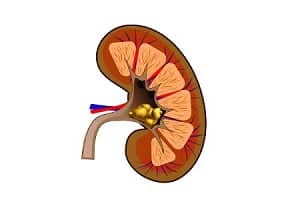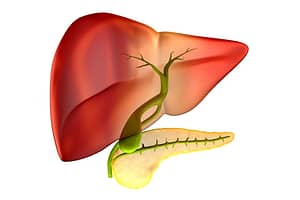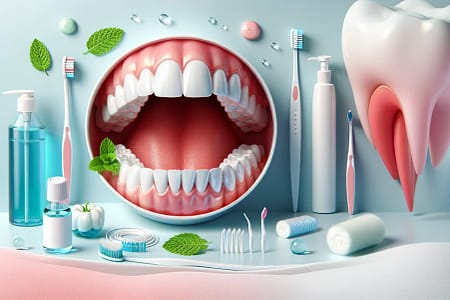
All over the world, many people are suffering from one or the other type of gum disease. Periodontal disease ranges from simple gum inflammation to serious disease resulting in major damage to soft tissues and bones supporting teeth.
In severe cases and when left untreated, a person may lose his/her teeth. Whether the gum disease will stop, slow down or worsen up depends on how you take care of your oral health.
Our mouth is full of bacteria. Some of them are helpful while some are not. These bacteria along with food particles and saliva constantly form a colorless sticky liquid called plaque. Brushing and flossing help in removal of this plaque which would otherwise deposit on the surface of teeth and cause gum disease. The mild form of gum disease (gingivitis) can be reversed while permanent damage (periodontitis) cannot be. Read about causes of gum disease.
Diagnosis of gum disease (periodontal disease)
Diagnosis of periodontal disease is done when the breakdown of periodontal supporting tissue is discovered. This is called as “attachment loss” and it starts with the breakdown of gum attachment fibers.
Generally, a probe is used to measure the depth of pockets formed due to detachment of gums from teeth. Deeper the gum pocket the worse is the infection. Diagnosis of periodontal disease at mild and severe stages is done by X-rays and radiographs.
During a routine checkup, your dentist examines the color and firmness of gums. Teeth are tested for looseness. Often, the “bite” is also inspected.
The dentist performs a number of tests and procedures to determine the gum disease and severity of the infection.
Following are the procedures commonly done for the diagnosis of gum disease.
- review medical history
- physical examination of gums
- periodontal screening and recording (PSR)
- tooth movement testing
- dental X-rays
The details of above-mentioned diagnosis procedures are given below.
Medical History
During the diagnosis, the first thing a doctor examines is the medical history of the patient suffering from the periodontal problem. Sometimes, other diseases like leukemia, diabetes and HIV infection accelerate the infection.
Medications like oral contraceptives also contribute to the problem. After examining the medical history, the dentist may advise for treatment and home dental care depending upon the severity of the problem. Read about treating the gum disease.
Inspection of gums
Dentist inspects the color and shape of gum tissue on the cheek side and tongue side of every tooth. A thorough examination of gums and teeth is done and compared with healthy gums to determine whether the person is suffering from any dental condition or not. Red and puffy gums that bleed easily upon probing indicate infection and inflammation.
If the gum formation between teeth is blunt, it indicates necrotizing periodontal disease. Puffiness of gums due to the presence of fluid is the most common and initial sign that a person should never ignore. However, the bone may have become soft because of the disease process. When the disease advances to mild and active state, it can be diagnosed by the recurrent bleeding from the gums even with gentle brushing.
The gums may be red to purple in color at infected sites. Moreover, the gums also appear quite shiny. Read about signs and symptoms of gum disease.
Periodontal Screening and Recording (PSR)
Periodontal screening and recording (PSR) is a simple and commonly used procedure used to diagnose the severity and stage of periodontal infection. The diagnosis is done by using a minor periodontal probe. It is a fine instrument calibrated in millimeters (mm). It is used to measure the depth of pocket formed in between the gums and the teeth.
An advanced automatic probe is being currently used by dentists for the diagnosis. The automatic probe is more sensitive and accurate than manual probes. This probe is held along the length of the tooth and its tip is placed in the pocket. The tip of the probe is touched where gum attaches to the tooth.
The dentist will slide the probe to specific six points on each tooth and measures the depth of the pocket. Pocket depth more than 3mm indicates periodontal gum disease. The measurement of depth helps in determining the condition of your gum tissue and amount of recession from the gum. This technique is more reliable as compared to x-ray diagnosis.
Tooth movement testing
The mobility of tooth is also examined to diagnose gum disease and infection. This is done by pushing each tooth between an instrument handle and observing the movement. The mobility of any tooth is a strong indicator of bone support loss which takes place when the infection has advanced.
X-ray diagnosis
X-ray images or radiographs are taken to score any damage or loss of bone structure supporting the teeth. About eighteen X-rays are taken to make a month long series necessary for prognosis and diagnosis of the infection.






